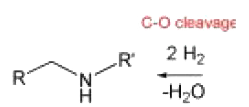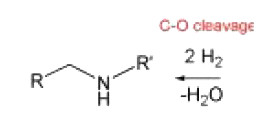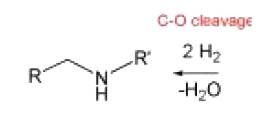Read the following statements w.r.t. archaebacteria : [(a)methanogens converts CO_2 and formic acid into methane, (b) halophiles develop a pigmented membrane to herness sun's energy, (c) All methanogens are heterotrophs. , (d) Thermoacidophiles oxidies sulphur to sulphuric acid under aerobic conditions., (e) methanogens and halophiles are present in guts of ruminant animals.]
(a),(b),(d) and (e)
(a), (b), (c),(d) and (e)
(b), (c), (d) and (e)
(a),(b) and (d)
The correct Answer is:D
Topper's Solved these Questions
Similar Questions
Read the following statements carefully and identify correct statements w.r.t. Lichens
a. The association cannot tolerate air pollution, especially due to sulphur dioxide
b. Lichens are annuals and their growth is slow
c. The fungal partner mostly belongs to ascomycetes.
d. Soredia are most efficient means of asexual reproduction
e. Orchids seldom occur without this association
f. Foliose lichens are pioneers of succession in a water body.
View SolutionRaghvan is a student of class 9 in a Chennai school. His teacher, Mr. Murthy, had just finished a lecture on various types of changes which take place even in the same substance under different experimental conditions. Mr. Murthy gave a beaker full of a common liquid to Raghav. A drop of this liquid can turn anhydrous copper sulphate blue. Mr, Murthy than asked Raghav to perform two different experiements starting with the given liquid which lead to the formation of gas/gases under different experimental conditions. He also asked Raghavan to classify these changes under different types of changes. Raghvan first arranged a distillation apparatus. He took some of the given liquid in the distillation flask and started heating it with a burner. After some time, a gas started forming and going into the condenser. The condenser cooled the gas and re-converted it into the original liquid. Raghvan then arranged an apparatus to pass electric current into the given liquid. He took the given liquid in the appropriate apparatus, acidified it by adding a little of sulphuric acid, and then passed electric current from a battery for a considerable time. He collected two gases in the two water-filled test-tubes inverted over the two electrodes of the apparatus. When the mixed these two gases and ignited this mixture very,very carefully (with the help of his teacher), he heard a little explosion and saw the drops of original liquid being formed. Raghvan both the experiments and the conclusions obtained to his teacher. Mr. Murthy was very happly
(a) What do you think was the liquid give to Raghvan by Mr. Murthy ?
(b) Which gas is formed when heat energy is applied to the liquid in the distillation flask ? What type of change occurs in this case ?
(c) Which two gases are formed when electric energy is applied to the acidified liquid in the appropriate appartus ? What type of change occurs in this case ?
(d) How does the above change (which occurs on passing electric current through acidified liquid) differ from the change which takes place when a piece of paper is burnt ?
(e) What values are displayed by Raghvan in this episode ?
View Solution
Knowledge Check
Read the following statements carefully and identify correct statements w.r.t. Lichens
a. The association cannot tolerate air pollution, especially due to sulphur dioxide
b. Lichens are annuals and their growth is slow
c. The fungal partner mostly belongs to ascomycetes.
d. Soredia are most efficient means of asexual reproduction
e. Orchids seldom occur without this association
f. Foliose lichens are pioneers of succession in a water body.Ac,d,fBa,c,d,fCa,b,eDa,c,dRead the passage given below and answer the following questions:
Reduction of carboxylic acids and their derivatives plays an important role in organic synthesis, in both laboratory and industrial processes. Traditionally, the reduction is performed using stochiometric amounts of hydride reagents, generating stochiometric amounts of waste. A much more attractive, atom-economical approach is a catalytic reaction using H2, however, hydrogenation of carboxylic acid derivatives under mild conditions is a very challenging task, with amides presenting the highest challenge among all classes of carbonyl compounds. Very few examples of the important hydrogenation of amides to amines, in which the C-O bond is cleaved with the liberation of water (Scheme 1), were reported. C-O cleavage of amides can also be affected with silanes as reducing agents.

We have now prepared the new, dearomatized, bipyridine-based pincer complex 3, catalyst 3(Here refered as Cat. 3). Remarkably, it efficiently catalyzes the selective hydrogenation of amides to form amines and alcohols (eq 1). The reaction proceeds under mild pressure and neutral conditions, with no additives being required. Since the reaction proceeds well under anhydrous conditions, hydrolytic cleavage of the amide is not involved in this process.

(Balaraman, E., Gnanaprakasam, B., Shimon, L. J., & Milstein, D. (2010). Direct hydrogenation of amides to alcohols and amines under mild conditions. Journal of the American Chemical Society, 132(47), 16756-16758.)
In the following questions, a statement of assertion followed by a statement of reason is given. Choose the correct answer out of the following choices on the basis of the above passage.
Assertion: Use of hydride catalyst or hydrogen brings about cleavage of C-O bond in amides.
Reason: Hydride catalyst or hydrogen cause to reduction of amides.AAssertion and reason both are correct statements and reason is correct explanation for assertion.BAssertion and reason both are correct statements but reason is not correct explanation for assertion.CAssertion is correct statement but reason is wrong statement.DAssertion is wrong statement but reason is correct statement.Read the passage given below and answer the following questions:
Reduction of carboxylic acids and their derivatives plays an important role in organic synthesis, in both laboratory and industrial processes. Traditionally, the reduction is performed using stochiometric amounts of hydride reagents, generating stochiometric amounts of waste. A much more attractive, atom-economical approach is a catalytic reaction using H2, however, hydrogenation of carboxylic acid derivatives under mild conditions is a very challenging task, with amides presenting the highest challenge among all classes of carbonyl compounds. Very few examples of the important hydrogenation of amides to amines, in which the C-O bond is cleaved with the liberation of water (Scheme 1), were reported. C-O cleavage of amides can also be affected with silanes as reducing agents.

We have now prepared the new, dearomatized, bipyridine-based pincer complex 3, catalyst 3(Here refered as Cat. 3). Remarkably, it efficiently catalyzes the selective hydrogenation of amides to form amines and alcohols (eq 1). The reaction proceeds under mild pressure and neutral conditions, with no additives being required. Since the reaction proceeds well under anhydrous conditions, hydrolytic cleavage of the amide is not involved in this process.

(Balaraman, E., Gnanaprakasam, B., Shimon, L. J., & Milstein, D. (2010). Direct hydrogenation of amides to alcohols and amines under mild conditions. Journal of the American Chemical Society, 132(47), 16756-16758.)
In the following questions, a statement of assertion followed by a statement of reason is given. Choose the correct answer out of the following choices on the basis of the above passage.
Assertion: N-methyl ethanamide on reaction with catalyst 3 will yield ethanol and methanamine.
Reason: Use of Catalyst 3 brings about cleavage of C-N bond of amidesAAssertion and reason both are correct statements and reason is correct explanation for assertion.BAssertion and reason both are correct statements but reason is not correct explanation for assertion.CAssertion is correct statement but reason is wrong statement.DAssertion is wrong statement but reason is correct statement.
How many of the following statements are wrong w.r.t glomerular filtration/ultrfiltration? a. On an average, 1100−1200 ml of blood is filtered by kidneys per minute b. The normal glomerular hydrostatic pressure is 10 mm Hg c. The glomerular filtration rate in a healthy individual is about 125 ml/min or 180 L/day d. The glomerular filtration consists of glucose, amino acids, hormones, vitamins, urea, lipids, creatinine, uric acid, electrolytes, (Na+, K+, Ca2+, Mg2+, HCO−3) etc. e. Glomerular filtration is not dependent on myogenic control
View SolutionCarbon-oxygent bond in ethers can be cleaved b halogen acids, sulphuric acid, phosphorus pentachlodie, etc. The cleavage of C-O bond take place under drastic conditions with excess of hydrogen halides.
R−O−R+2HX→2RX+H2O
If hydrogen halide is not taken in excess then a molecule of alcohol and alkyl halide are formed.
R−O−R+HI373K−−→R−OH+R−I
The order of reactivity of hydrogen halides towards the given reaction depends on the bond strength of halogenated acids, weaker is the H-X bond, greter is its reactivity. In case of unsymmetrical ethers, the site of cleavage is such that the halide is formed from the alkyl group which is smaller in size. However, when one of the alkyl group is tertiary, the halide formed is the tertiary halide.
Indiate wheterh the following statements / reactions are true or false.
Tertiar butyl methyl ether reacts with HI according to the following reaction.
CH3−CH3∣C∣CH3−OCH3+HI→CH3−CH3∣C∣CH3−OH+CH3I
(a) True (b) False
View SolutionCarbon-oxygent bond in ethers can be cleaved b halogen acids, sulphuric acid, phosphorus pentachlodie, etc. The cleavage of C-O bond take place under drastic conditions with excess of hydrogen halides.
R−O−R+2HX→2RX+H2O
If hydrogen halide is not taken in excess then a molecule of alcohol and alkyl halide are formed.
R−O−R+HI373K−−→R−OH+R−I
The order of reactivity of hydrogen halides towards the given reaction depends on the bond strength of halogenated acids, weaker is the H-X bond, greter is its reactivity. In case of unsymmetrical ethers, the site of cleavage is such that the halide is formed from the alkyl group which is smaller in size. However, when one of the alkyl group is tertiary, the halide formed is the tertiary halide.
Indiate wheterh the following statements / reactions are true or false.
In the reaction, R−O−R+HX→RX+ROH, oxonium ⎡⎢ ⎢⎣R−+O∣H−R⎤⎥ ⎥⎦ ioin is formed as intermediate.
(a) True (b) False
View SolutionRead the passage given below and answer the following questions:
Reduction of carboxylic acids and their derivatives plays an important role in organic synthesis, in both laboratory and industrial processes. Traditionally, the reduction is performed using stochiometric amounts of hydride reagents, generating stochiometric amounts of waste. A much more attractive, atom-economical approach is a catalytic reaction using H2, however, hydrogenation of carboxylic acid derivatives under mild conditions is a very challenging task, with amides presenting the highest challenge among all classes of carbonyl compounds. Very few examples of the important hydrogenation of amides to amines, in which the C-O bond is cleaved with the liberation of water (Scheme 1), were reported. C-O cleavage of amides can also be affected with silanes as reducing agents.

We have now prepared the new, dearomatized, bipyridine-based pincer complex 3, catalyst 3(Here refered as Cat. 3). Remarkably, it efficiently catalyzes the selective hydrogenation of amides to form amines and alcohols (eq 1). The reaction proceeds under mild pressure and neutral conditions, with no additives being required. Since the reaction proceeds well under anhydrous conditions, hydrolytic cleavage of the amide is not involved in this process.

(Balaraman, E., Gnanaprakasam, B., Shimon, L. J., & Milstein, D. (2010). Direct hydrogenation of amides to alcohols and amines under mild conditions. Journal of the American Chemical Society, 132(47), 16756-16758.)
In the following questions, a statement of assertion followed by a statement of reason is given. Choose the correct answer out of the following choices on the basis of the above passage.
Assertion: The use of catalyst 3 is an efficient method of preparation of primary amines
Reason: Use of catalyst 3 is a step down reaction.
View SolutionRead the passage given below and answer the following questions:
Reduction of carboxylic acids and their derivatives plays an important role in organic synthesis, in both laboratory and industrial processes. Traditionally, the reduction is performed using stochiometric amounts of hydride reagents, generating stochiometric amounts of waste. A much more attractive, atom-economical approach is a catalytic reaction using H2, however, hydrogenation of carboxylic acid derivatives under mild conditions is a very challenging task, with amides presenting the highest challenge among all classes of carbonyl compounds. Very few examples of the important hydrogenation of amides to amines, in which the C-O bond is cleaved with the liberation of water (Scheme 1), were reported. C-O cleavage of amides can also be affected with silanes as reducing agents.

We have now prepared the new, dearomatized, bipyridine-based pincer complex 3, catalyst 3(Here refered as Cat. 3). Remarkably, it efficiently catalyzes the selective hydrogenation of amides to form amines and alcohols (eq 1). The reaction proceeds under mild pressure and neutral conditions, with no additives being required. Since the reaction proceeds well under anhydrous conditions, hydrolytic cleavage of the amide is not involved in this process.

(Balaraman, E., Gnanaprakasam, B., Shimon, L. J., & Milstein, D. (2010). Direct hydrogenation of amides to alcohols and amines under mild conditions. Journal of the American Chemical Society, 132(47), 16756-16758.)
In the following questions, a statement of assertion followed by a statement of reason is given. Choose the correct answer out of the following choices on the basis of the above passage.
Assertion: Aniline can be prepared from suitable amide using catalyst 3
Reason: The use of catalyst 3 is limited to aliphatic amides only.
View Solution
